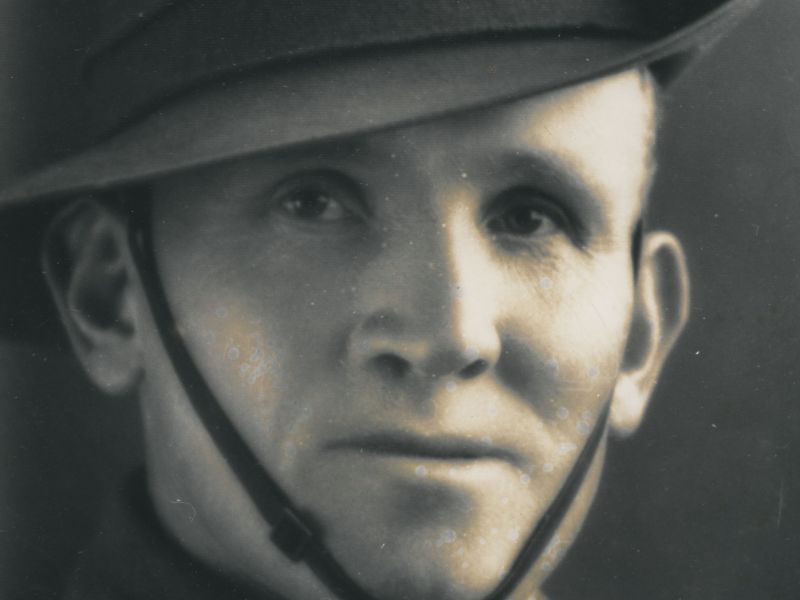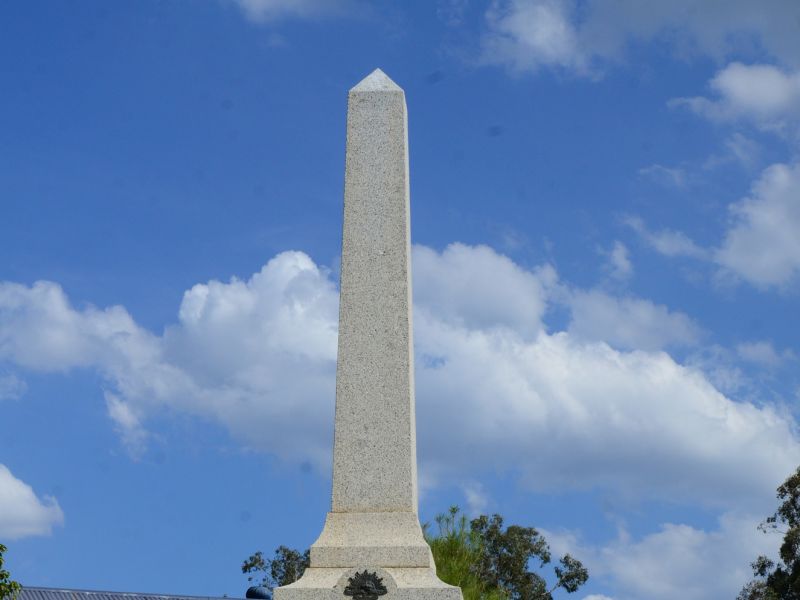Frederick (Fred) Gitten
In the early hours of the 22nd of June, 1942, 1054 prisoners of war (209 civilians and 845 military personnel) were awakened at Malaguna Road Camp on the island of New Britain, and told to get ready to move. Taken captive when the Japanese had invaded the island, they were to be taken to Japan, to be used as slave labour. Conditions on the ship were beyond humane. Little food and water, and inadequate sanitary arrangements. The outward appearance of the Montevideo Maru was that of a standard Japanese transport. There were no special markings to indicate she was carrying prisoners of war.
At 0229 hours, on the morning of July the 1st, disaster struck. Two explosions were felt, both on the starboard side in holds No. 4 and No. 5. As the ship began to list to the starboard side and began going down from her stern, the Captain called to abandon ship. At 0240 hours she disappeared completely from the surface. Of the 1054 prisoners and 88 crew on board, only approximately 20 survived. The survivors were all Japanese.
The Montevideo Maru had been tracked by the US submarine USS Sturgeon, under the command of Lt. Cdr. William Wright, for over four hours. The Americans had no idea that they had just played a part in Australia’s worst maritime disaster. The Upper Murray lost five of their own that day. Fred Gittens was one of them.
In April, 2023, Sydney based Silent Foundation, and the Dutch company Fugro, located the wreck of the Montevideo Maru at a depth of more than 4000 metres, off the coast of the Philippines. No longer will the 1054 prisoners have “no known grave” next to their names.
Fred was born on the 3rd of February, 1903, in the Tasmanian coastal town of Burnie. The Australian Electoral Rolls have Fred listed as living in Cudgewa from as early as 1927, through to when he enlisted. In 1928, as noted in the 14th of June issue of the Corryong Courier, Fred applied for a land grant of 183 acres (allotment 4a, sec 5a) in the Parish of Nariel.
Fred enlisted in the 2nd AIF on the 22nd of May, 1940, at Corryong, being allocated the Army No. VX42242. Initially he was placed in the AASC (Australian Army Service Corp) as a general reinforcement. At the time he enlisted he was a single 37 year-old truck driver. He gave his sister, Mrs Jessie Smedley of Cudgewa, as his next of kin. He was taken on strength with the R.R.D. (Recruit Reception Depot) at Caulfield before being transferred to the No. 5 AIF Depot in Colac in the Western Districts. A little over one month later, he was transferred to the 2/22nd Battalion, which by that time were stationed at Puckapunyal.
In September of 1940, the 2/22nd Battalion were given orders to move to Bonegilla, just outside of Wodonga. This time there were no trains but the decision was made to march the 225 kilometres. In those days the Hume Highway was one lane each way. Nights would be spent either under tents or billeted out in a local showgrounds. The battalion received a good reception as they passed through each town along the way, especially as the 2/22nd Band would play them into each town. They arrived at Bonegilla on the 4th of October. Training began for desert warfare. Unbeknown to them at the time, their destination was not the deserts of Egypt and Libya but the tropical rainforests of New Britain.
While stationed at Bonegilla, Fred got himself into a little trouble. The crime of disobeying an order of his superior officer found himself confined to barracks for two days. Two other misdemeanours, both while stationed at Rabaul, would see a further few days of confinement to barracks.
At the time of the Japanese invasion of New Britain, Fred was a member of C Company of the 22nd Battalion. C Company was charged with defending the Vunakanau airdrome. They had spent weeks digging machine-gun pits and building new living quarters when they were ordered to rig everything with explosives so that it could be destroyed rather than allow the Japanese to take possession of it. At 0330 hours on the 22nd of January, a lone Hudson aircraft belonging to 24 Squadron RAAF, took off from the airfield. Within hours dozens of enemy aircraft launched from the carriers Akagi and Kaga attacked the field. In the following week chaos racked the defenders. Due to a lack of support from the Australian Government and the top echelons of military leaders, the defenders withdrew in an attempt to evacuate the island. It’s not known exactly what experiences Fred had during that last week. It is known that during the last week of January 1942, he was captured at Toma Plantation, just south of the airfield C Company was defending. He became POW No. 506.
Fred is remembered on the Australian War Memorial Roll of Honour, Ballarat Australian Ex-Prisoners of War Memorial, the Rabaul Memorial and the Corryong War Memorial. For his service, he was awarded the 1939-1945 Star, the Pacific Star, the Defence Medal, the War Medal 1939-1945 and the Australian Service Medal 1939-1945.

 Stephen Learmonth
Stephen Learmonth
